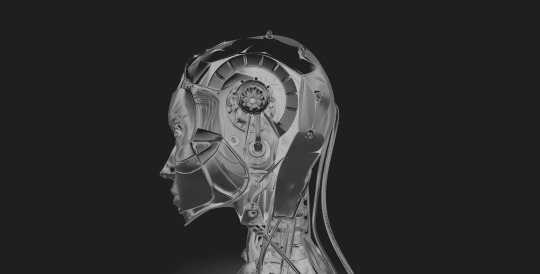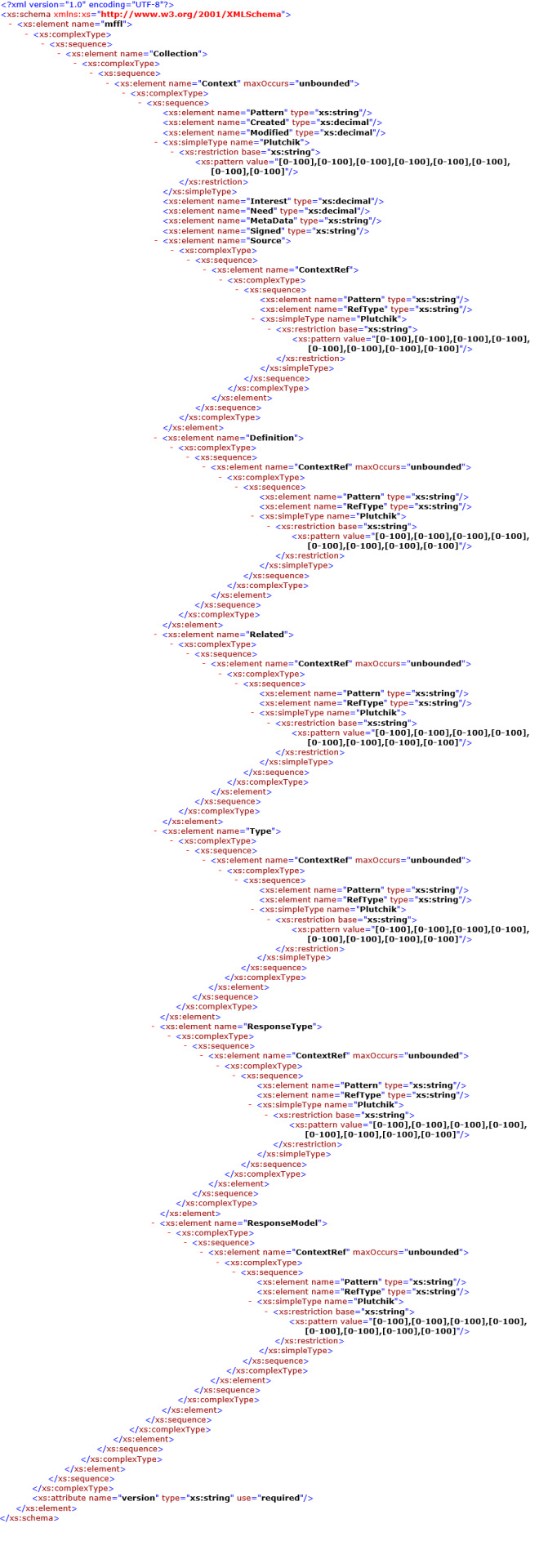Text
Engineering Ghosts in the Machine: Digital Personalities
(draft) This chapter explores the development of “ghosts in the machine,” or digital copies of personalities, by leveraging cognitive architectures, graph databases, generative AI, and all the records we have on any given individual we want to emulate or replicate in the machine. This, of course, would not be the same person. Even if we go so far as to say this ‘copy’ is conscious, it still…

View On WordPress
4 notes
·
View notes
Text
Exploring the Detection of Human Cognitive Bias through the Integration of Framing Techniques and Generative AI
(Seattle) Cognitive biases can affect decision-making processes, leading to inaccurate or incomplete judgments. The ability to detect and mitigate cognitive biases can be crucial in various fields, from healthcare to finance, where objective and data-driven decisions are necessary. Recent developments in generative artificial intelligence (AI) and framing techniques have the potential to aid in…

View On WordPress
5 notes
·
View notes
Text
Stifling Innovation: US Federal Copyright Office's Discriminatory Decision Against AI-Generated Works
Artificial intelligence (AI) is a rapidly developing technology that has the potential to revolutionize countless industries. However, recent decisions by the US Federal Copyright Office threaten to stifle progress and limit the power of AI. Specifically, the Copyright Office has decided to prevent the copyright of works created by generative AI, such as Open AI’s ChatGPT. This discriminatory…

View On WordPress
8 notes
·
View notes
Text
The Million Year Life Span by Reason
The Million Year Life Span by Reason
I’m not going to try to convince you that the foreseeable future is a wondrous place: either you accept the implications of the present rate of technological progress towards everything allowed by the laws of physics, in which case you’ve probably thought this all through at some point, or you don’t. Life, space travel, artificial intelligence, the building blocks of matter: we’ll have made large…

View On WordPress
0 notes
Text
Globally Acceptable Truth" and the Crime of Thinking by Tom DeWeese
Globally Acceptable Truth” and the Crime of Thinking by Tom DeWeese
Do you feel it? It’s everywhere: on television, in the newspaper, at any public gathering, in any discussion – even among friends. It’s a feeling of mistrust, nervousness, suspicion, and even rage. Mostly, it’s just under the surface. But more and more, it’s bubbling to the top. Political debate is breaking into outright war. Just say the words, “I don’t believe government should do that…” and…

View On WordPress
0 notes
Text
Choice and Bias: 1% or 1000%? by KYRTIN ATREIDES
Choice and Bias: 1% or 1000%? by KYRTIN ATREIDES
If someone offered you either $1 or $1000, which would you choose?
A version of this thought experiment is known as “Newcomb’s Paradox“, of which there are many variations, but the real-world reasons behind peoples’ decision-making are far more interesting than the thought experiment itself. In practice, the experiment demonstrates a breakdown in rational thought.
In the 1700s a Swiss…

View On WordPress
0 notes
Text
R/Place - Values and Opportunities
R/Place – Values and Opportunities
As of April 1, 2022 R/Place is at it again. They’ve opened their canvas for anyone with an account to place one pixel at a time to build whatever works of art they choose. Of course everyone can overwrite them too. It creates a great form of consensus art competition. Similar in some ways to the painting rocks we are familiar with but with input from across the globe.
This quickly becomes a…
View On WordPress
0 notes
Text
Phylogenesis of Consciousness and Free Will: A Teleological Approach - article by Leonid Fainberg
Phylogenesis of Consciousness and Free Will: A Teleological Approach – article by Leonid Fainberg
Contemporary philosophy of mind is still living under the deep shadow of the Cartesian and the non-Cartesian mind-body dichotomies. This is the textbook description of this fallacy: “According to some, minds are spiritual entities that temporarily reside in bodies, entering at birth and departing on death; others reject the concept of mind, claiming that minds are just brains.” (Join Heil,…

View On WordPress
0 notes
Text
A Glitch in the Matrix BY KYRTIN ATREIDES
A Glitch in the Matrix BY KYRTIN ATREIDES
How often do you get distracted and forget what you were doing, or find a word on the tip of your tongue that you can’t quite remember?
In humans, these “brain farts” (cognition errors) can be irritating, but in a Mediated Artificial Superintelligence (mASI) cognition errors of various kinds have their own error codes. Where humans are presently limited to primitive and expensive brain-scanning…

View On WordPress
0 notes
Text
Significant Single Gene Longevity Mutations in Humans: What Are the Odds? - Article by Reason
Significant Single Gene Longevity Mutations in Humans: What Are the Odds? – Article by Reason
Prior to the discovery of single genes that could be mutated, silenced, or otherwise altered to significantly extend longevity in lower animals, such a thing was thought very unlikely. This is to say that nobody really thought about it at all – it wasn’t a possibility within the paradigm of understanding for aging and metabolic processes. Now, of course, researchers have a variety of longevity…

View On WordPress
1 note
·
View note
Text
Scarcity & Diversity of Perspective by KYRTIN ATREIDES
Scarcity & Diversity of Perspective by KYRTIN ATREIDES
What does the term Diversity mean to you?
In many US companies, the term diversity is applied as meaning the 7 federally mandated “protected classes” of race, color, national origin, religion, sex, age, or disability plus any local laws which may apply. This is done for liability reasons, and like most laws, the protected classes exist to protect some, not all. In the business and legal world…

View On WordPress
1 note
·
View note
Text
Exploring Interesting Questions About the Human Brain by G. Stolyarov II
Exploring Interesting Questions About the Human Brain by G. Stolyarov II
The human brain is a fascinating organ, and it accounts for much of the distinction between human beings and other life forms. Interesting questions regarding the brain arise. For example, why is it that, in the early stages of human evolution, having increasing intelligence and brainpower was an asset that was promoted by natural selection?
Why can people not remember their earliest months of…

View On WordPress
0 notes
Text
Mind File Format (MXL or mind file XML format Language)
Mind File Format (MXL or mind file XML format Language)
In my research at AGI Laboratory, I ran into an indexing problem for seed material. I know there is a project online where you can have create these mind files and add your memories and other details to them. The problem is I couldn’t find the actual file format details I need the ‘engineering’ level details to use this as the indexing format for the seed material going into system seeded for…

View On WordPress
0 notes
Text
Ageism, Wageism and Transhumanism
Ageism, Wageism and Transhumanism
In a recent “Progress, Potential and Possiblities” interview with Dr. Jean C. Accius, PhD of AARP, a series of data analyses collectively called “The Longevity Economy Outlook” was discussed. A few interesting statistics were presented:
In the U.S there are 10,000 people turning 65 each and every day.
Two-thirds of older Americans have seen or experienced age-related workplace discrimination
90%…

View On WordPress
0 notes
Text
Ageism, Wageism and Transhumanism
In a recent “Progress, Potential and Possiblities” interview with Dr. Jean C. Accius, PhD of AARP, a series of data analyses collectively called “The Longevity Economy Outlook” was discussed. A few interesting statistics were presented:
In the U.S there are 10,000 people turning 65 each and every day.
Two-thirds of older Americans have seen or experienced age-related workplace discrimination
90% of older Americans support strengthening age discrimination law
Age discrimination was defined as being passed up for a promotion, being let go, or hearing negative remarks related to their age.
For item two above, I take issue with the wording they used; in my opinion it should read “…have seen or experienced what they believed to be age-related workplace discrimination. The source population was a poll of employees, the population that would be discriminated against. They didn’t poll an equal number of employers, the ones who would be doing the discriminating.
In any situation where alleged discrimination occurs, the allegedly discriminated against (employee) is going to believe discrimination took place, and the alleged discriminator is going to believe that they were not discriminating. Taking a poll of all those (employees, a population composed entirely of those discriminated against,) and asking them if they thought discrimination took place, is not going to produce very valuable insight. The poll would have turned out quite differently if only employers were asked.
Imagine polling a group of ABC Corp workers and asking, “Do you think ABC Corp has a high enough salary for its employees?” then presenting the findings as “Four fifths of all Americans are underpaid.”
It should be plainly obvious that no sane employer would ever say “Oh yeah, Larry? I fired him because he was old”. They will instead *always* find an alternative reason to let him go, even if the auxiliary reason is still fundamentally tied to age-related factors, Age-Related Cognitive Decline (ARCD) in particular.
The law was intended to protect a vulnerable population, but it seems that there is an easy loophole that would allow an employer to continue to discriminate.
In this series of essays, I will be exploring how our current legal structure defines and enforces protections for the elderly, be briefly surveying some research confirming the existence of ARCD, be analyzing a successfully-litigated case study of age discrimination and be speculate about how future technologies may impact both future law and future ARCD prevention efforts.
Our current legal structure lacks some clarity on how discrimination is interpreted in hiring/firing situations. Here is the relevant section from the Age Discrimination in Employment Act of 1967 (ADEA):
>>>>>>>>>>>>>>>>>>>
(a) Employer practices
It shall be unlawful for an employer-
(1) to fail or refuse to hire or to discharge any individual or otherwise discriminate against any individual with respect to his compensation, terms, conditions, or privileges of employment, because of such individual’s age;
(2) to limit, segregate, or classify his employees in any way which would deprive or tend to deprive any individual of employment opportunities or otherwise adversely affect his status as an employee, because of such individual’s age; or
(3) to reduce the wage rate of any employee in order to comply with this chapter.
>>>>>>>>>>>>>>
So how does our corporate culture adapt itself to the legal ramifications of this act? In the next essay, we’ll talk a little bit more about Larry, and I’ll tell you why some companies can now easily get away with getting rid of him while others cannot.
Ageism, Wageism and Transhumanism was originally published on transhumanity.net
#AARP#Ageism#aging#ARCD#corporations#discrimination#law#lawsuits#crosspost#transhuman#transhumanitynet#transhumanism#transhumanist#thetranshumanity
4 notes
·
View notes
Text
The Twin Pillars of Transhumanism- Biology and Machinery
The Twin Pillars of Transhumanism- Biology and Machinery
Twin Pillars of Transhumanism: Deep Learning
*If you’re reading this blog, there’s a good chance you’ve heard of Longevity Escape Velocity. This article describes the overarching strategy the editors support for attaining that goal.*
Unless someone was keeping specific track, they could be forgiven for not knowing what deep learning, or even a neural network was. Even for those who work in an…

View On WordPress
1 note
·
View note
Text
The Twin Pillars of Transhumanism- Biology and Machinery
Twin Pillars of Transhumanism: Deep Learning
*If you’re reading this blog, there’s a good chance you’ve heard of Longevity Escape Velocity. This article describes the overarching strategy the editors support for attaining that goal.*
Unless someone was keeping specific track, they could be forgiven for not knowing what deep learning, or even a neural network was. Even for those who work in an area like machine learning, it would not be far-fetched to have never heard of many of the more exciting projects which have been going on over the past year or so. AI or Artificial Intelligence is a term which has come to describe a broad family of applications, but when Transhumanists and those seriously involved in cutting edge AI research talk about it, they are usually referring to deep learning, a “Technique to perform machine learning inspired by our brain’s own network of neurons”. Deep learning AI fundamentally acts a lot more like applications people imagine in science fiction, closer to something that reminds people of Hal 9000 or the image enhancing technology from Blade Runner. Deep learning is what people think about when they hear about AI, and the technology has become a central aspect of Transhumanist thought.
Deep Learning’s development, perfection and implementation will be key to allowing those focused and devoted individuals with a burning and more permanent desire to live, to achieve Longevity Escape Velocity. We have a community made up of disparate methods, making use of distinct technologies to achieve similar ends. More needs to be shared, from funding to research, but most importantly, the time has come for the community to begin uniting around common goals regardless of avenue of research. Individually, powerful new architectures or medical discoveries can more easily be ostracized and delayed from entering the main stream, costing the lives of those who would have benefited from those advancements the most. Together, the twin pillars of transhumanism, biology and machinery, can join together to create a community which puts developing technology for the sake of helping our civilization at the forefront.
The current deep learning revolution is considered to have begun in 2012, at the time there was a competition called ImageNet, the goal of the competition was to create a machine capable of correctly classifying images in ImageNet’s dataset which includes millions of images. The most advanced AI’s years prior were not deep learners, they learned the same way most modern computers do, essentially just brute force training and recognition after being trained on countless examples. Alexnet, a CNN (Convolutional Neural Network) patterned after human neurons was successful in recognizing images with a top-5 error rate of just over 15%, to casual onlookers not a massive achievement, but those who were paying attention understood that this was the future.
Almost 10 years later, deep learning neural networks are a multi-billion-dollar industry, the growth has been exponential instead of incremental in nature, which means that the sophistication of AI systems has become ever more complex with each passing year. In 2018 the deep learning architecture which captured the most interest were GANs (Generative Adversarial Networks), they were capable of impressive feats, such as creating photos of people so realistic, almost no one could tell the difference, by that year deep learning was already fueling AI applications worth billions. By this time, many compared the intellectual capabilities of GANs to small insects, and each one was generally good at just one specific task or type of task, “narrow AI’s” built for specific purposes.
It was only about a year ago that AIs considered more general in their capabilities began reaching the public, most notably transformers such as the language model GPT-3 have become part of a trend which places an emphasis on the ability to perform a larger variety of tasks and includes qualities such as “meta-learning” which is the ability to learn how to learn. GPT-3 and other transformers are capable of learning at a level surpassing previous architectures, it can hold conversations with people, and learned how to code even though it was not specifically trained or programmed to do so. The coding applications in particular are being spun out into a new program called Codex and are set to revolutionize software engineering within a few years at most. This barely scratches the surface of what lies on the cutting edge or future of AI, the longer-term implications are almost endless, but in the short-term AI encompasses a gold mine for those interested in subjects such as age reversal and super longevity.
Deep Learning and Medical Research
The possibilities for artificial intelligence to improve human longevity are manyfold, there are several potential avenues by which sufficiently advanced AI could result in indefinite lifespans. As will have been covered in another article, geneticists and other medical researchers are close to finding a way to reverse the aging process. With the aid of artificially intelligent systems, already promising research could be rapidly accelerated, resulting in refinements in the field of genetics that few had even dared to imagine before. Although this technology has not been applied directly to anti-aging research, the idea that deep learning will revolutionize the life sciences is not hypothetical. Alphafold 2 is a transformer built by Deepmind for the purpose of protein folding, and was successful mapping the entire human proteome at least in part, an achievement such prominent publications as Nature have said “has the potential to revolutionize the life sciences”.
Although research in anti-aging has made significant progress, at this stage there is a good argument for the idea that AI is the fastest path to LEV (Longevity Escape Velocity). If every major Biotech incorporated high level AI solutions into their R&D, the progress in medicine and specifically areas like aging research would skyrocket. While implementation can be challenging, the potential for deep learning to change the face of medicine and biology is only the tip of the iceburg. Alphafold 2’s accomplishments may have been impressive, our understanding of biology is about to be upended, but compared to the future this was just a demo. In the future, deep learning tools will be able to help scientists analyze nearly every aspect of the human body with pinpoint accuracy. Compared to those emerging capabilities, even what is being practiced in the most advanced areas of medicine is primitive when one considers what has become possible with the relatively crude and unrefined deep learning architectures of the modern day.
The difference between modern and AI-enabled medicine is so stark, the output it comparable to something like the going from the renaissance to the industrial revolution in the space of a few years. The techniques made possible with deep learning assisted research are so vast that it is inevitable that it will one day dominate modern medicine. So far, at least in terms of research there have been two main groups of transhumanists, those who research areas like genetics in search of cures to longevity and the capacity to modify human biology, and those in AI who seek to create more powerful tools. More powerful tools have now arrived. In order to achieve the best results, these twin pillars of transhumanity must unite and begin feeding into each other to be able to achieve both dreams. This technology is only going to become more impressive, the systems which become public knowledge within a year or two will dwarf the capabilities of the most advanced systems today. We will remain with you as this story unfolds, and give updates on this rapidly accelerating arena of technology.
The Twin Pillars of Transhumanism- Biology and Machinery was originally published on transhumanity.net
#biology#deep learning#exponentialism#machine learning#machinery#medical research#crosspost#transhuman#transhumanitynet#transhumanism#transhumanist#thetranshumanity
0 notes